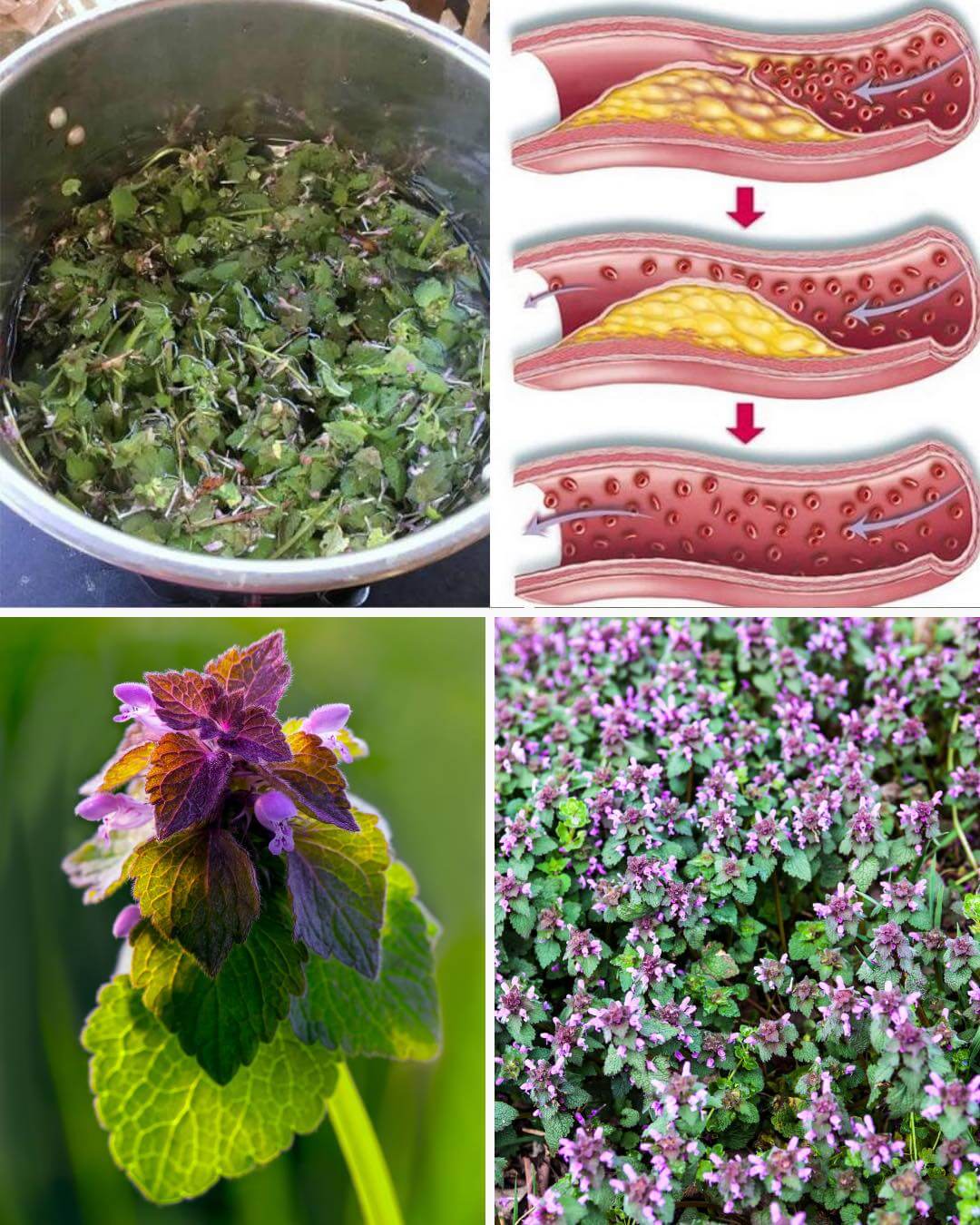Purple dead nettle (Lamium purpureum) often pops up in gardens, fields, and roadsides across North America and Europe. Though many consider it a pesky weed, this plant actually holds significant value as both an edible and medicinal herb.
Before you pull it out, take a moment to learn how to spot it and how you can make use of this surprisingly versatile plant.
Understanding Purple Dead Nettle
Despite its name, purple dead nettle isn’t a true nettle. It belongs to the mint family (Lamiaceae), featuring square stems, fuzzy heart-shaped leaves, and small purple-pink flowers. Unlike stinging nettles, it won’t sting your skin, hence the term “dead” nettle. It typically appears early in the season and is one of the first food sources for pollinators like bees.
Identifying Purple Dead Nettle
Recognizing purple dead nettle correctly is key if you want to forage it.
- Leaves
Shape: Heart-like with a scalloped edge.
Texture: Soft and fuzzy.
Color: Top leaves often have a purple or reddish hue, especially in sunlight. Bottom leaves are typically green.
Arrangement: Pairs of opposite leaves grow along the square stem. - Stems
They are square-shaped and slightly hairy—common characteristics in the mint family. - Flowers
Color: Tiny, tube-shaped blooms ranging from pink to purple.
Placement: Grow in clusters above the upper leaves.
Blooming Period: Primarily in spring, though they can appear into fall. - Size and Growth
Usually grows 5 to 12 inches tall and spreads into thick mats or ground cover. - Typical Locations
Thrives in disturbed areas like gardens, lawns, roadsides, and pastures. Prefers moist soil but grows in dry or poor conditions as well.
Look-Alikes to Avoid
- Henbit (Lamium amplexicaule): Similar, but has rounder leaves growing around the stem without stalks.
- Red clover or stinging nettle: Different leaf shapes and lack square stems and clustered flowers.
Is It Safe to Eat?
Absolutely. All parts—leaves, stems, and flowers—are edible. They offer a mix of vitamins A and C, iron, antioxidants, and flavonoids. The taste is mildly sweet and earthy. For the best flavor and tenderness, harvest young leaves in early spring before full bloom.
Health Benefits of Purple Dead Nettle
This herb has long-standing use in traditional medicine, thanks to its anti-inflammatory, antibacterial, antifungal, and diuretic properties.
Common uses include:
- Healing minor wounds via poultices
- Easing seasonal allergies
- Soothing joint pain
- Supporting the immune system with its nutrients and antioxidants
Creative Ways to Use Purple Dead Nettle
Once harvested, this plant can be put to use in many practical ways—both in the kitchen and the medicine cabinet.
1. Culinary Uses
- Fresh in Salads: Add raw young leaves to your greens for color and a mild flavor. Combine with spinach, dandelion greens, or arugula. Best harvested before the plant becomes too tough.
- Smoothies and Juices: Toss a few leaves or flowers into fruit smoothies. They pair nicely with citrus, apple, pineapple, or ginger. Always rinse well and blend with juicy fruits and a bit of lemon.
- Cooked Dishes: Use in omelets, stir-fries, or soups like spinach. Lightly sauté with garlic and olive oil or stir into veggie broths and egg dishes.
- Herbal Pesto: Blend with lemon juice, garlic, olive oil, and seeds or nuts. This makes a wild, herbaceous pesto with a nutritional edge.
2. Herbal Tea
This soothing tea supports immune health and may relieve allergy symptoms and inflammation.
To make:
Ingredients: 1 tablespoon fresh (or 1 teaspoon dried) leaves/flowers and 1 cup hot water
Instructions: Rinse and bruise the leaves. Pour hot water over them and steep for 7–10 minutes. Strain and enjoy. Add lemon or honey for flavor. You can also mix with herbs like chamomile, lemon balm, or peppermint.
3. Tincture for Immunity and Allergies
You’ll need:
- Fresh leaves and flowers
- Vodka or grain alcohol (minimum 40%)
- Clean glass jar and dropper bottle
Steps:
Fill the jar halfway with chopped plant matter, then pour alcohol to cover. Seal and label. Let sit in a cool, dark place for 4 to 6 weeks, shaking every few days. Strain and store in a dropper bottle. Use 10–15 drops in water up to three times a day to support immune function or ease allergy symptoms.
4. Skin-Healing Infused Oil
Helpful for treating cuts, burns, rashes, or bites due to its antimicrobial and anti-inflammatory nature.
You’ll need:
- Dried or fresh purple dead nettle
- Carrier oil (olive, almond, or coconut)
- A clean glass jar
Steps:
Chop and pack the herb into the jar. Cover with oil, making sure everything is submerged. Let it steep on a sunny windowsill for 2–3 weeks. Strain and store in a dark area.
Optional Salve: Melt 1 part beeswax with 3 parts of this oil and pour into tins to create a balm.
5. Flower Garnishes or Herbal Ice Cubes
The purple blossoms are completely edible and look beautiful atop desserts or salads. Freeze them in ice cube trays with water to give drinks a unique herbal twist.
6. Herbal Powder
You can also dry the leaves and turn them into a powdered seasoning.
Steps:
Fully dehydrate the leaves, then crush them using a mortar and pestle or spice grinder. Use in soup blends, on roasted veggies, or in herbal salt mixtures.
Storage: Store in a sealed jar in a cool, dark place. Use within six months for best potency.
Important Harvesting and Safety Notes
Only harvest from areas you’re sure are free of pesticides or pollutants. Avoid roadside plants. Always wash thoroughly. Start with small servings to see how your body reacts. Pregnant or nursing individuals should consult a health provider before use.
Purple dead nettle is one of the easiest wild herbs to find and use. Once you learn to identify it, you’ll notice it nearly everywhere, especially in early spring. Whether you choose to drink it as tea, stir it into meals, or apply it on your skin, this humble plant serves as a powerful example of nature’s overlooked gifts.
